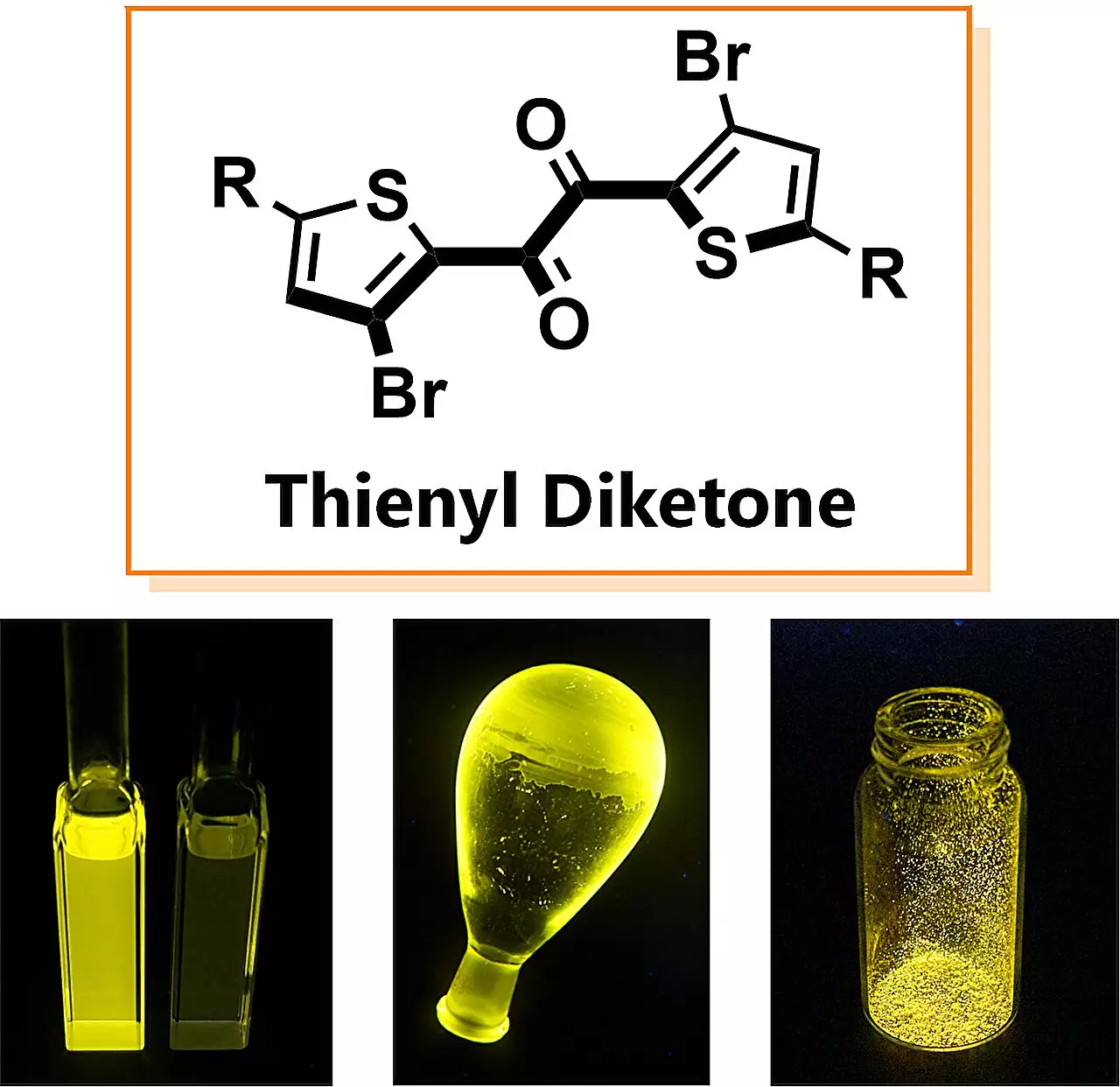Recent advancements in materials science have highlighted a game-changing discovery by a team from Osaka University: the organic molecule thienyl diketone, which exhibits remarkable phosphorescence capabilities. Best known for its efficiency—over ten times faster than that of traditional phosphorescent materials—this molecule not only challenges established norms but also sets a new standard for future innovations in the field. The significance of this research, detailed in the journal *Chemical Science*, extends beyond academic curiosities; it signals a transition towards more sustainable and efficient materials for various applications.
The Journey from Discovery to Understanding
The serendipitous nature of this discovery cannot be understated. Yosuke Tani, the senior author of the study, shared that the initial excitement surrounding thienyl diketone arose from its unexpected performance. As researchers garnered more data, their curiosity transitioned into a systematic exploration of the underlying mechanisms fueling this superior phosphorescence. Unlike previous endeavors in this realm, which relied heavily on rare metals like iridium and platinum—both costly and environmentally taxing—this study underscores the possibilities embedded in organic compounds.
By employing innovative techniques and delving deeper into the molecular structure, Tani and his team elucidated why thienyl diketone outperformed other organic phosphorescent materials. Their insights reveal a pivotal moment where understanding the mechanics of energy transitions allowed them to cut through the age-old challenges posed by competing non-radiative processes. The researchers established that the molecule’s unique structural elements minimize energy loss, making it a frontrunner in high-efficiency applications.
Implications for Industry and Technology
The ramifications of this discovery are monumental. With thienyl diketone demonstrating the potential to replace rare metal-based phosphorescent materials, industries ranging from organic LED (OLED) displays to medical diagnostics stand on the brink of transformation. Phosphorescence is integral to many optical functions, particularly in technology related to lighting and healthcare. By harnessing the attributes of this organic molecule, manufacturers can not only reduce costs but also improve the eco-friendliness of their products.
Moreover, the research offers fresh design guidelines for developers focused on creating organic phosphorescent materials. These guidelines don’t just aim to replicate past successes but invite a reimagining of current methodologies, integrating sustainability and efficiency into future designs. The prospect of high-performance phosphorescent materials devoid of precious rare metals could democratize access to advanced optical technologies, making them more broadly available and affordable.
A Future of Exploration and Excitement
While this study has provided a clearer image of the operational dynamics of thienyl diketone, Tani acknowledges the vast territory yet to be explored. Each breakthrough opens the door to endless questions and further investigations, propelling the scientific community toward even greater innovations. With this exploration, there remains an exhilarating opportunity to refine and expand the potential applications of organic phosphorescent materials.
The excitement within the research community reflects a growing recognition of the importance of sustainable practices in science. The high-performing thienyl diketone not only holds the promise of revolutionizing current technologies but also seeks to pave the way for a future where advanced materials and environmentally conscious methods go hand in hand. As we stand on the precipice of this new era, the anticipation of what lies ahead is palpable.

